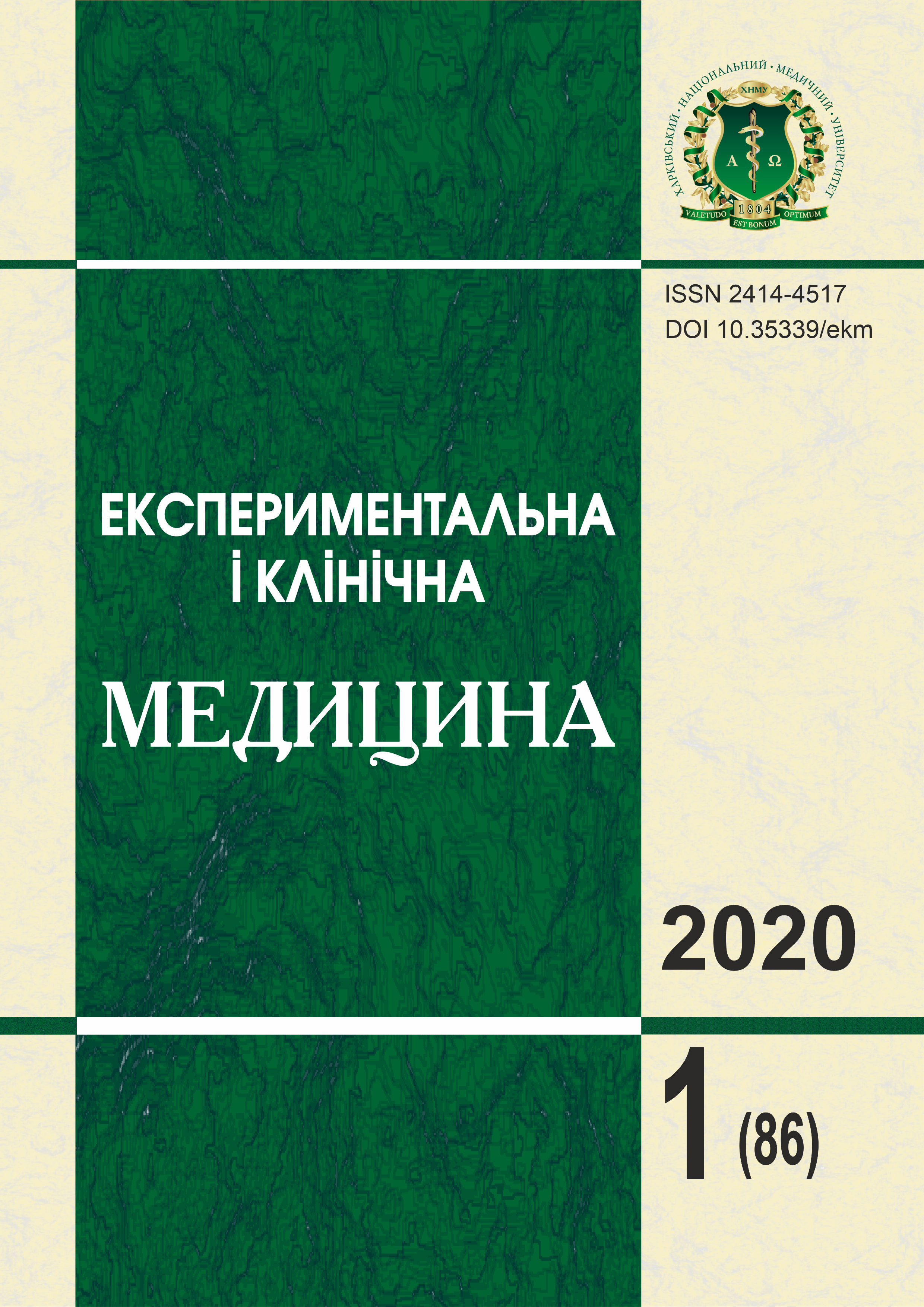Abstract
We studied the systemic effect of photodynamic therapy (PDT) in experimental animals at PDT local exposure on their radiation-induced ulcer (the local skin irradiation dose of 85.0 Gr) infected with S. aureus. Lipid peroxidation (LPO) products (malondialdehyde, diene conjugates) were determined in blood serum. LPO levels were measured by conventional techniques. It was found that the values of pro[1]oxidant markers concentration (2.0-2.5 fold increased diene conjugates level, 30-40 % increased malondialdehyde content in the infected group), which dramatically increased after local irradiation of the outer surface of thigh and, especially, after infection of the wound surface, at PDT treatment restored to normal levels.
Keywords: infected radiation ulcer, photodynamic therapy (PDT), lipid peroxidation (LPO), malondialdehyde (MDA), diene conjugates (DC).
References
Baraboi, V. A., Sutkovoi, D. A. (1997). Okislitelno-antioksidantnyi gomeostaz v norme i pri patologii [Oxidative-antioxidant homeostasis in health and disease]. Kyiv. 423. [in Russian].
Korotkich, N. G., Toboev, G. V. (2010). Eksperimentalnoe obosnovanie effektivnosti primeneniya gipoksena v lechenii ostrykh gnoino-vospalitelnykh protsessov myagkikh tkanei [Experimental substantiation of the effectiveness of hypoxene in the treatment of acute purulent-inflammatory processes of soft tissues]. Patologicheskaya fiziologiya i eksperimentalnaya terapiya - Pathological physiology and experimental therapy, 1, 18-19 [in Russian].
Novikov, V. E., Klimkina, E. I. (2009). Vliyanie gipoksenana morfofunktsionalnoe sostoyanie pecheni pri ekzogennoi intoksikatsii [Effect of hypoxene on the morphofunctional state of the liver in exogenous intoxication]. Eksperimentalnaya i klinicheskaya farmakologiya - Experimental and Clinical Pharmacology, 72(5), 43-45 [in Russian].
Council of Europe (1986). European convention for the protection of vertebrate animals used for experimental and other scientific purposes (1986 Mar 18). European Treaty Series, 23, 11. Available from: https://rm.coe.int/168007a67b
Reznikov, O. H., Soloviov, A. I., Dobrelia, N. V., Stefanov, O. V. (2006). Bioetychna ekspertyza doklinichnykh ta inshykh naukovykh doslidzhen, shcho vykonuiutsia na tvarynakh: metodychni rekomendatsii [Biotic examination of reports and scientific reports, how to test the creatures: methodical recommendations]. Visnyk farmakolohii ta farmatsii - Bulletin of Pharmacology and Pharmacopoeia, 7, 47-60 [in Ukrainian].
Lvovskaya, E. I., Volchegorskii, E. I., Shemyakov, S. E., Lifshits, R. I. (1991). Spektrofotometricheskoe opredelenie konechnykh produktov perekisnogo okisleniya lipidov [Spectrophotometric determination of final products of lipid peroxidation]. Voprosy meditsinskoi khimii – Questions o f medicinal chemistry, 4, 92-94. PMID: 1750220 [in Russian].
Karpischenko, A. I. (Eds.). (1999). Meditsinskaya laboratomaya tekhnika. Malonovyy dialdegid (TBK-aktivnyye produkty): spravochnik v 2-kh tomakh [Medical laboratory technology. Malondialdehyde (TBK-active products): ahandbook in 2 volumes]. 2. Saint Petersburg: Intermedika, 100-101 [in Russian].
Labinskaya, A. S., Blinkova, A. P., Eshchina, A. S. (Ed.). (2004). Obshchaya i sanitarnaya mikrobiologiya s tekhnikoi mikrobiologicheskikh issledovanii [General and Sanitary Microbiology with Microbiological Research Technique]. Moscow: Meditcina, 576. [in Russian].
Ministerstvo zdravookhraneniya SSSR. Ob unifikatsii mikrobiologicheskikh (bakteriologicheskikh) metodov issledovaniya, primenyaemykh v kliniko-diagnosticheskikh laboratoriyakh lechebno profilakticheskikh uchrezhdenii. Prikaz № 535 ot 22.04.1985. [USSR Ministry of Health. On the unification of microbiological (bacteriological) research methods used in clinical diagnostic laboratories of medical institutions: Order № 535 dated 04.22.1985]. Moscow: MZ SSSR. Available from: http://docs.cntd.ru/ document/420245293 [in Russian].
Karu, T. (1987). Photobiological fundamentals of low-power laser therapy. IEEE J Quantum Electron, 23(10), 1703-1717.
Konchugova, T. V. (2007). Optimizirovannye lazemye vozdeistviya v povyshenii funktsionalnykh rezervov organizma pri stressogennoi adaptatsii [Optimized laser effects in increasing the functional reserves of the body during stress-induced adaptation]. Extended abstract o f Doctor o f Medical Sciences. Moscow. 46. [in Russian].
Shanin, Yu. N., Shanin, V. Yu., Zinovev, E. V. (2003). Antioksidantnaya terapiyavklinicheskoipraktike [Antioxidant therapy in clinical practice]. Saint Petersburg: ELBI-SPb, 121 p. [in Russian].
Zhukov, B. N., Lysov, N. A., Vasileva, E. A. (1997). Vnutrisosudistoe lazernoe izluchenie v kompleksnom lechenii bolnykh oklyuzionnymi zabolevaniyami ven nizhnikh konechnostei [Intravascular laser radiation in the complex treatment of patients with occlusive diseases of the veins of the lower extremities]. In: Laser & Health. The 1-st International Congress (Nov 11-16 1997), 13, Limassol, Cyprus [in Russian].

